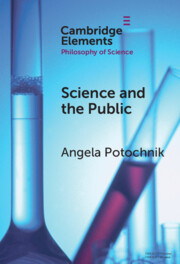Element contents
Science and the Public
Published online by Cambridge University Press: 23 March 2024
Summary
Keywords
- Type
- Element
- Information
- Online ISBN: 9781009049474Publisher: Cambridge University PressPrint publication: 25 April 2024
References
- 11
- Cited by

